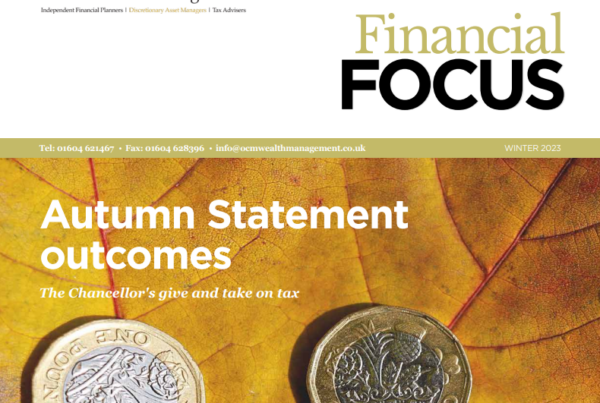Bulls and Bears Battling it out
As it has now been two months since we went defensive it is worth looking again at the reasons for it and what is happening. In December the markets were horribly volatile and had three intraday swings of 5% or more, two of which were on the down side and by Christmas eve depending on which portfolio you are in and what benchmark you are set against we were positive by circa 5%, with the markets recording the worst December since the 1930’s. You can see the movements that we experienced in December in the chart below and the bears certainly won over that period.
Then in January following Decembers falls the market rallied based on optimism that the fed will not be raising US rates and hope that the trade wars will end and that many of the world’s central banks will extend QE and keep monetary supplies loose and accommodative for longer. As a result, we have had a rally and the bulls have been standing proud and as a result we have seen most of the losses in December been recovered across many of the global indices with some still showing a loss in GBP terms. We can categorially say that the bulls won out in January.
No one is expecting February to be another January so we are not in the least worried and our clients have not experienced the volatility as noted above so we are comfortable to maintain the positions we hold in the belief that over the coming months the bears will win this battle and the gains in January are temporary and what we are experiencing is technically called a “Bull Trap”
What is a “Bull Trap”
“A bull trap is a false signal indicating that a declining trend in a stock or index has reversed and is heading upwards when, in fact, the security will continue to decline.” If not viewed as such the bull trap will persuade investors to believe all is okay and invest heavily in equity to only see the trend downwards accelerate and the trap have been sprung.
A fall like we experienced in December and a rally like January are normal when we enter a bear market and if you have the stomach and the technical appetite to read down, we will explain what is going on and why we are confident that this is temporary and not worth chasing.
At the start of a bear market you will get a fall like we had in December then ironically the bulls develop a sense of relief that the lows are in, and a return of optimism and greed set in and create an aggressive counter rally following an initial scary drop. This is in our opinion exactly what happened in December then January.
Why are we confident this is a bull trap?
Although we agree a dovish Fed that has stated it will no longer be raising rates is a positive and may be all that’s needed to keep 2019 bullish (after all, this playbook has worked for the past 10 years), there is evidence that this rally may turn out to be a big, fat “bull trap”.
What is very interesting when you look at where we are now and what is happening technically there are so many similarities with what happened in 2000 and 2007 to the extent where they cannot be ignored and are continuing signals that we are at the start of the bear market. Note the common and concurrent elements of the previous two big market tops (2000, 2007) versus now. And it’s not a single data point, but rather a repetitive set of factors that give credibility to our position and lead us to believe that this is a Bull Trap. Let me walk you through the factors step by step.
First, here’s the big analysis reflecting charts from Northern Trader.com, going back to 1994 which includes the S&P 500, some basic technical elements, a price chart of the 10-year yield and the unemployment rate:
Chart 1
1. As you can see, we have new market highs tagging the upper monthly band on a monthly negative RSI (relative strength index) divergence — check.
2. A counter rally that produces a bump in the RSI around the middle zone, alleviating oversold conditions — check.
Chart 2
3. A steep correction off the highs for the S&P 500 that breaks a multi-year trend line — check.
4. A correction that transverses all the way from the upper monthly Bollinger band to the lower monthly Bollinger band before bouncing — check.
5. A counter rally that moves all the way from the lower Bollinger band to the middle Bollinger band, the 20-day moving average — check.
6. A turning of the monthly Moving Average Convergence Divergence (MACD) toward south and the histogram to negative — check.
Chart 3
7. All these events occurring following an extended trend of lower unemployment in the US, signaling the coming end of a business cycle — check.
8. All these events coinciding with a reversal in 10-year US Government bond yields — check.
9. All these events coinciding with a Federal Reserve suddenly halting its rate hike cycle — check.
Now, as we know, past performance does not necessarily reflect future performance, but when you have so many indicators all pointing the same way, it would be negligent to think that because the markets rallied in January following an awful December, that we should start thinking we should again be invested in equities and chase the Bull. This is in our opinion a telegraphed trap, accepting we could be wrong. Technically, though we have had a strong rally in January from the lows in December but the S&P 500 (SPX) is still trending below its 200-day moving average. The 200 moving day average acts as both measures of strength and weakness. However, as long as SPX remains below its 200 moving average without a confirmed breakout above, then the detail discussed above, remains intact as a thesis, and there is therefore a well-founded risk that this market can still turn into a full-fledged bear market. After all, economic growth is slowing, earnings growth is slowing and the last three times the Fed halted its rate-hike cycle a recession soon followed.
As a little reminder in 2000 the S&P 500 peaked in August at 1520 then fell and had a few bull traps one in particular in 2001, when the S&P 500 rallied from a low in December, then fell again. From there it took a while for the market to trend fully down, but it eventually reached a low in Sep 2002 of 815 reflecting a fall from peak to trough of 46.3%. Again in 2008 the market peaked in Oct 2007 at 1545 before rallying again into May 2008 then falling back and then capitulated following the Lehman banking collapse and breaking of the global financial system and bottomed out in Feb 2009 at 735 reflecting a fall from peak to trough of 52.5%.
Today the S&P 500 peaked at 2913 in September 2018 and we would expect the lows in 2016 to be tested if the data continues to decelerate globally and earnings continue to fall, reflecting a potential peak to trough drop of circa 30% and a further 25% from where we are today. Just because we are expecting it though does not mean it will happen next week accepting it would be easier, neither does it necessarily mean it will happen. We therefore continue to watch the data and observe the detail.
Summary
Whether the rally continues, or the bull trap scenario becomes a reality in hindsight, will remain unconfirmed for some time. The first few down days following the peak in January 2001 and the peak in May 2008 on reflection did not have anyone waving a big, white flag screaming the top is in, accepting on both occasions though we were positioned defensively, so I did not care, in the same way as we are today.
It’s easy to see these things in hindsight, but much harder, if not impossible, if you’re in the thick of things. And this is where we are now in the thick of things and I expect to be that way for many weeks to come, noting I suspect we’ll know more in the next month or two. We do though have conviction behind this thesis and believe that what happened in January is not something that means the world is okay, it is a normal recovery in falling market.
From our perspective we see the risk reward still reflecting 2% upside and 20% downside (minimum), and on that basis, we are going to remain defensively positioned and ignore January and treat it as a bull trap and not something that is indicative of a change in the global economic outlook, which is poor.
VBW
Jason Jason Stather-Lodge CIO, CEO & Founder



